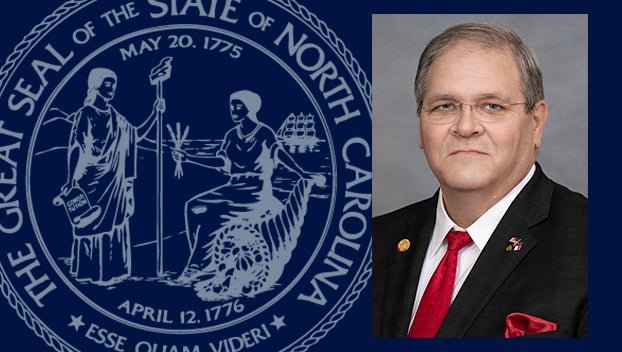NC Maritime History Council hosts fall conference
Published 6:46 pm Tuesday, November 10, 2015

FRANCES HAYDEN
RECEPTION: Pictured, members of the NC Maritime History Council and guests mingle during a wine and cheese reception at the Museum of the Albemarle.
FRANCES HAYDEN
HISTORICAL SPEAKER: Pictured (right) is Anna Gibson Holloway, a maritime historian with the National Park Service. Holloway was welcomed as the keynote speaker for the NC Maritime History Council’s annual conference and spoke about a history of maritime salvage in the 1800s.
A passion for maritime history motivated a group of like-minded individuals to form the North Carolina Maritime History Council in 1988. The council recently held its annual conference for 2015 in Elizabeth City where it explored the city’s rich history and historic sites.
At the conference in Elizabeth City, the focus was the Swamps of the Albemarle, and Anna Gibson Holloway, a maritime historian with the National Park Service, was welcomed as the event’s keynote speaker and spoke about a history of maritime salvage in the 1800s, according to Blount Rumley, retired facility manager at the North Carolina Estuarium in Washington and member of the council. Members of the council and invited guests explored various sites where they learned historical facts about the area. The group visited Long Point Island, a site where Long Point Beacon Light (No. 8) was established in 1879 on Coinjock Bay in the Currituck Sound in coastal NC. Little history is known about the station or its occupants, except that the U.S. Coast Guard retired it in 1901. The island later served as a refueling station for seaplanes for the Coast Guard in World War II, according to Rumley.
Rumley said the annual conference is an opportunity to learn fragments of history that couldn’t be found most anywhere else, something he finds very important.
“A lot of history we talk about cannot be found in most books,” Rumley said. “It’s more of an oral history. A lot of these things we learn and promote and teach are unique to the areas in the coastal region.”
The council’s primary focus is to “identify and encourage historical and educational projects that have as their purpose the enhancement and preservation of the state’s maritime history and culture, and create public awareness of that heritage,” a primary reason Rumley continues his involvement.
“I feel strongly about preserving the history of North Carolina’s coastal region, and I feel strongly about educating others about it,” Rumley said.
The conference is held each year, at varying cities throughout the state’s coastal region, including Washington, Cape Hatteras, Wilmington, Beaufort, Jacksonville, Edenton, Swansboro, New Bern and others. The council works closely with various educational institutions with regard to historical preservation projects. An example would be the Queen Anne’s Revenge shipwreck project, possible through a partnership of East Carolina University’s Maritime Studies department and several other institutions and organizations, Rumley said. The council served as the principal grant recipient for the project.
The council has also published “Tributaries,” North Carolina’s only maritime history journal, since 1991.
“Whatever we do, we have fun doing it,” Rumley said. “It’s not all seriousness. We like to have a good time.”
Rumley said next year, the plan is to host the conference in New Bern and then in Corolla the following year.
For more information or to get involved, visit http://ncmaritimehistory.com/ or email Blount Rumley at blount.rumley@gmail.com.





